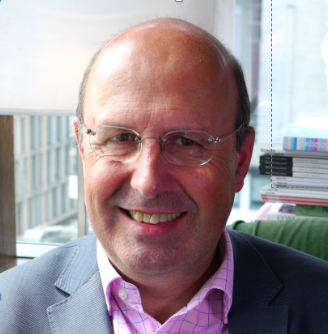You can sign up to our LinkedIn newsletter here.
The Limits of an Employer only Network
If you’re currently employed as a senior professional in a larger business, the very strong likelihood is that most of your network will be within that business. It may be that you’ve also got some contacts with people in the industry. Maybe you’ve got some contacts with people in your wider profession. But often if you’ve spent 10 – 15 years in one large employer, your wider network will be very limited outside your employer. The truth is that people buy people. If you want to get work as a Portfolio Executive, then people are going need to get to know who you are. If you’ve got no external network today, that doesn’t prevent you from becoming a Portfolio Executive, but it does mean that you need to start working on building a network now.
Former Colleagues
The first place that I suggest you start to rebuild your network, is to go back to people you’ve worked with in the past and revitalise these relationships. Given that they are looking to change the way they work, go to those people and ask for advice. It may be that you have lost track of lots of people. I strongly recommend that you use LinkedIn to reconnect with people who you’ve worked with in the past. LinkedIn has got great features for finding people who have worked with you in the past, by just checking employers that you’ve worked for. You will often remember the names of people when you start to scan through. You can narrow your focus by business function, geography, when they worked there and you can quite quickly find people. A short LinkedIn message saying, ‘we used to work together at company x and it’d be great to get reconnected,’ can start to build out your network quite quickly. I suggest you then follow up using LinkedIn direct messaging and try to arrange a telephone or Zoom ‘virtual coffee’.
Build the Right Network
This establishes a kernel from which you can build a wider network. Once you’ve done these quick wins, the next step is to be intentional about the network that you want. Start by being clear about who the clients are that you’d like to work with. It may be that the clients you’d like to work with are drawn from suppliers that you’ve had within your organisation. It may be the clients you’d like to work with are drawn from smaller competitors of your organisation. Or you’d like to work with smaller clients of your organisation. Perhaps you want to take your existing professional skills and apply them in an area of the marketplace where you have a passion, but no existing connections.
So let me give you an example. Let’s imagine that you’ve had a role as a senior finance director in a large consumer goods company. Rather than taking that skill and then working for smaller consumer goods companies, you got pretty fed up and jaundiced just about the consumer goods industry. What you’d really like to do, is take those skills and apply them to organisations in the creative arts. Now you’re looking to build a completely new network. My recommendation would be that you start to move into that network by finding similar finance directors who work in that area and ask them for advice. Start to build relationships with CEO’s in that area by understanding what’s important to them. Build out your network in the creative arts space. As you get more and more informed about what’s happening in this sector, start to comment, again using LinkedIn, about things that you’re noticing and start to develop a point of view. I’m constantly reassured by the willingness of people who I’ve connected with on LinkedIn to have a short 30 min conversation. Make sure this does not turn into a sales conversation. This is a conversation where you’re looking to explore an area of common interest, share contacts, share experiences.
It’s Easier to Build a Network than You might Think
To become a successful Portfolio Executive, you will need to develop a network. If you haven’t got the network, you need today, I would strongly recommend that you put some time and energy over 3 to 6 months to build that network that’s going to serve you well when you become a Portfolio Executive before you take steps to leave your current employer.

Charles McLachlan is the founder of FuturePerfect and on a mission to transform the future of work and business. The Portfolio Executive programme is a new initiative to help executives build a sustainable and impactful second-half-career. Creating an alternative future takes imagination, design, organisation and many other thinking skills. Charles is happy to lend them to you.
